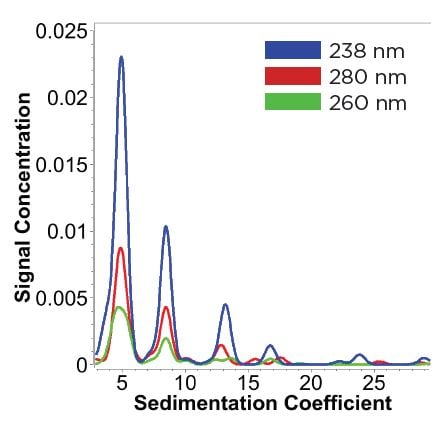分析型超速离心机(AUC)助您加速 EV 表征


为何使用分析型超速离心机(AUC)来表征细胞外囊泡(EV)?
因此,准确评估这些异质性纳米颗粒的纯度、尺寸分布、形状特征和内容物包装等关键属性至关重要。分析型超速离心机(AUC)技术可在单次实验中全面测量此类关键参数,因而成为 EV 表征的首选解决方案。

AUC 在 EV 分析中的独特优势
- 无底物或基质相互作用
- 无需校准标准品
如图所示,AUC 技术帮助我们确定一个脐带血 EV 样品中包含四种主要组分,其中体积最小、沉降系数为 5S 的组分在数量上最为丰富。

了解 EV 的形状特征

如图所示,当大多数颗粒的摩擦系数比为 1 时,这些颗粒的形状接近于球体,而当 f/f0 大于 1 时,则表明颗粒形状更加伸展或呈线性结构。
EV 生物分子组分表征

总结
Optima AUC 分析型超速离心机赋能用户精准识别和定量 EV 制备样品中的各种细胞群,同时深入揭示这些群体的分子组分与形状特征 分子组分与形状特征。此外,该技术还提供了关于样品纯度的关键信息,, 这对于评估 批次间的可比性和稳定性至关重要。 作为一项全面且深入的表征技术,分析型超速离心机不仅帮助我们揭示了 EV 自身的特性,还让我们看到了它们在医学、生物学以及生物技术等多个领域中的广阔应用前景。

